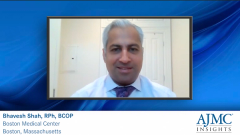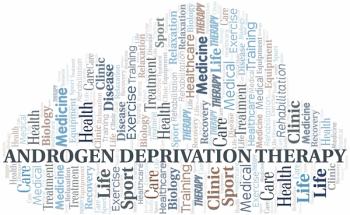
What Evidence Is Needed to Further Define CVD Risk in Prostate Cancer?
Experts share insight on the need for clinical or real-world evidence to further solidify cardiovascular disease risk as an actionable factor in prostate cancer.
Episodes in this series

Transcript:
Bhavesh Shah, RPh, BCOP: We have all these data that we always talk about, which is usually a retrospective analysis of large health care systems from outside the United States, that we’re looking at the evidence for. We’re doing meta-analysis. We have small phase 2 randomized controlled trials. We could use a randomized control trial to bring light to all the things we need to manage these patients better. But we may not have the luxury to do a randomized control trial. Imagine doing a randomized control trial to show cardiovascular events related to an intervention. It could take years, and the magnitude of the patients you need may be significant amount.
This is where we could use real-world evidence. We have endorsement even from government agencies like the FDA. They’re already using real-world evidence to approve therapies that would take years to do randomized controlled trials. They have a framework to get more evidence for specific diseases, for specific interventions. So real-world evidence would be huge in terms of getting evidence efficiently to providers in managing this disease from a perspective of better, safer treatments.
Maria Lopes, MD, MS: There’s certainly an opportunity for real-world data as new treatment options emerge that appear to be safer. Following this through in terms of real-world evidence, that helps demonstrate that, on the background of comorbidities, there may be different risk classifications from a cardiovascular-risk or other risk perspective and the numbers needed to treat to avoid an event.
Data help us understand the degree of clinical differentiation, both in the short and long term, with implications for total cost of care, reducing cardiovascular-risk reduction and [measuring] how quickly that occurs—to be able to demonstrate clinical benefit and financial return. There’s definitely an opportunity for real-world data and also for risk tools. Risk tools that can be embedded in the EMR [electronic medical record] or used for predictive analytics to call out patients who may be at higher risk with something actionable. That can be considered and perhaps allow oncologists across multiple specialties opportunities for education. There’s a more holistic view on the cause and effect of treatments related to cancer and their impact on the context of age, comorbidities, and other risk factors, so better decision-making can occur and so we’re not only evidence based but also cost conscious.
John L. Fox, MD, MHA: The key question for everyone regarding cardiovascular morbidity and mortality and the impact these drugs have in men with prostate cancer is what type of evidence would be compelling? What type of evidence would be compelling to a health plan to prefer 1 therapy over another? What type of evidence would be compelling to a medical oncologist as they’re making treatment decisions? What type of evidence would be compelling to the NCCN [National Comprehensive Cancer Network] as it writes its guidelines in preferring antagonists, which the evidence suggests lowers cardiovascular morbidity and mortality compared with agonists? What type of evidence would be compelling?
We have 1 clinical trial, 80 patients, that showed that patients receiving GNRH antagonists had lower cardiovascular morbidity and mortality, yet that hasn’t changed health plan decision-making. It hasn’t changed physician decision-making. It hasn’t changed the guidelines. So what type of evidence would be compelling? I don’t think we’re going to have large head-to-head trials in the future, so the most likely place the evidence will come from is real-world evidence. There are challenges with real-world evidence, including the elimination of bias or confounders in the analysis. That would be the most compelling evidence. Health plans are unlikely to make a move on preferring antagonists over agonists unless there’s a recommendation from the NCCN.
If there was clear evidence, including supported by guidelines, that GNRH agonists increase the risk of cardiovascular disease and that GNRH antagonists should be used preferentially, how do we affect that change? How do we ensure that patients get the appropriate therapy? There are probably a couple of ways of doing that. One is to use decision-support tools at the time of ordering therapy. Many EMRs, including oncology EMRs, have the ability to deliver that information to providers.
The other way to do that could be through health plans. If there’s evidence that agonists are inferior and that we should be using antagonists instead, then we could implement that at the level of the health plan. Today, though, that GNRH agonists like Lupron [leuprorelin] aren’t prior authorized, at least in the plan that I’ve most recently worked with, whereas GNRH antagonists are. So if we were to want to implement that, we’d have to change our policies and procedures around how we manage those therapies. I’d also note that education is going to be critical. I cited evidence earlier that 75% of men initiating treatment for prostate cancer with GNRH analogs have preexisting cardiovascular events or are at high risk for cardiovascular events, yet the market share for GNRH agonists is 97% compared with about 3% for GNRH antagonists. There’s a lopsided distribution compared with the risk that exists.
Transcript edited for clarity.
Newsletter
Stay ahead of policy, cost, and value—subscribe to AJMC for expert insights at the intersection of clinical care and health economics.










































